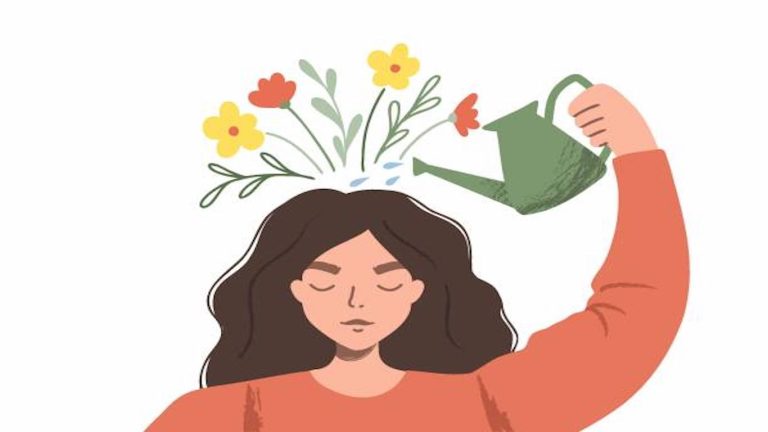The Dark Side of Positivity
Meet Kate, a 30 year old mom to 2 beautiful boys. A woman on the surface who seems to have it all together. A stable job, a loving husband and sons, great mental health and someone that seems to enjoy various privileges in life. Yet underneath that perfect facade or idealistic mother, Kate often finds herself unable to recognise or even express her emotions properly, leading to emotional outbursts in an unhealthy way. Kate often uses well-inteted yet harmful phrases when expressing emotion. For example she says to herself “there is no reason for you to be sad; compared to a lot of people you are privileged”. Phrases like this, while sometimes speaking some truth, are crucial to remember that sadness or pain is not exclusive to a particular class. One should not compare their own situation to anyone else but themselves, and focus on what they are feeling, why they are feeling this way, and how to overcome it. Invalidating her own emotions will only serve to bury her feelings deeper.
In addition, Kate has been raised to think that taking care of her emotions means suppressing them. The idea that by expressing sadness or frustration is a sign of weakness. Because of this, Kate has developed the tendency to mask her true feelings behind a smile, despite a feeling of hurt inside.
Looking at this case study, in a world where putting on a brave face, staying strong and looking on the bright side of life is encouraged, it is easy to fall into the trap of what I’d like to call toxic positivity. Putting it simply, Kate suffers from the relentless pursuit of happiness and most importantly the suppression of any kind of negative emotion. This can really cause major consequences to our mental health and emotional well-being. Let’s dissect Kate’s case study together in order to understand this phenomena further.
The consequences
Kate’s inability to recognise and express her emotions may seem fine short term but do eventually take its toll. Kate may feel the need to release her emotions in an unhealthy way by for example binge-eating, excessive drinking or even engaging in different risky behaviors. Think about suppressed emotions as if it were a pressure cooker. By piling more emotions on top of it one way or another it will finally burst. And when it does, it does so in ways that are harmful to your well-being.
Understanding Kates behavior
In order to understand the reasons behind Kate’s behavior it is important to look beyond the surface. Factors such as her upbringing and societal influences definitely have conditioned her into believing that negative emotions are undesirable. An example of this could be that Kate’s parents would always emphasize the importance of appearing happy and put-together to others. Consequently, she was never able to learn to navigate the complexities of her emotions. The key to this is recognition. Without recognising her tendency to suppress emotions you aren’t able to fix it. While it may seem like Kate is fully entangled in the web of toxic positivity, shifting her perspective from suppression to a healthy release is the key.
Releasing emotions in a healthy way
Kate’s shift to better emotional health has to begin with self-awareness or what I referred to as recognition earlier. She must be able to recognise that her emotions, both positive and negative, are valid and are able to be portrayed to others. It is essential for her to give herself the permission to feel sad or angry and not have to worry about potential judgment not only from others but especially herself. By taking the first step of acknowledging these difficult emotions, she can start to understand the root causes and work through them.
After the recognition phase, seeking external support is key. Asking for help from her friends, family and even therapists can also be instrumental in Kate’s transformation. Being able to openly talk about her feelings and experiences can help her gain some valuable insight and find healthier ways to release her emotions. Being able to put how you are feeling into words means that you are making some steps in trying to understand and process what is going on in your mind. In addition, talking to others makes you feel less alone in these situations. Others may share they have similar problems and the ways in which they cope. Things such as journaling, meditation and mindfulness also can be very powerful in your self-discovery and emotional healing.
Ultimately, Kate’s journey teaches us, as the readers, that the path to emotional well-being is not about suppressing negativity but about embracing the full spectrum of human emotions. Toxic positivity may offer a temporary escape from discomfort, but it is the embrace of our feelings, both positive and negative, that leads to true healing and personal growth.
In a world that often demands us to wear masks of unwavering happiness, let’s make sure we remember that our authenticity lies in our vulnerability. By breaking free from this idea of toxic positivity, we are able to truly discover the transformative power of genuine emotional expression and to find true contentment in the complexities of our emotions.

Caitlyn Ly Brownrigg
Have obtained my Bachelor of Science, majoring Mind and behaviour at the University of Groningen, Netherlands. And currently interning at Tranquil as a Psychology Trainee.
I am originally South African but have lived in Vietnam for 18 years of my life. This is why I am passionate about exploring the intricate intersections between culture, identity and psychology. This unique background had fueled my curiosity and deepened my appreciation for the complexities of human experience and I am excited to share my knowledge and discoveries with you.




Tks so much